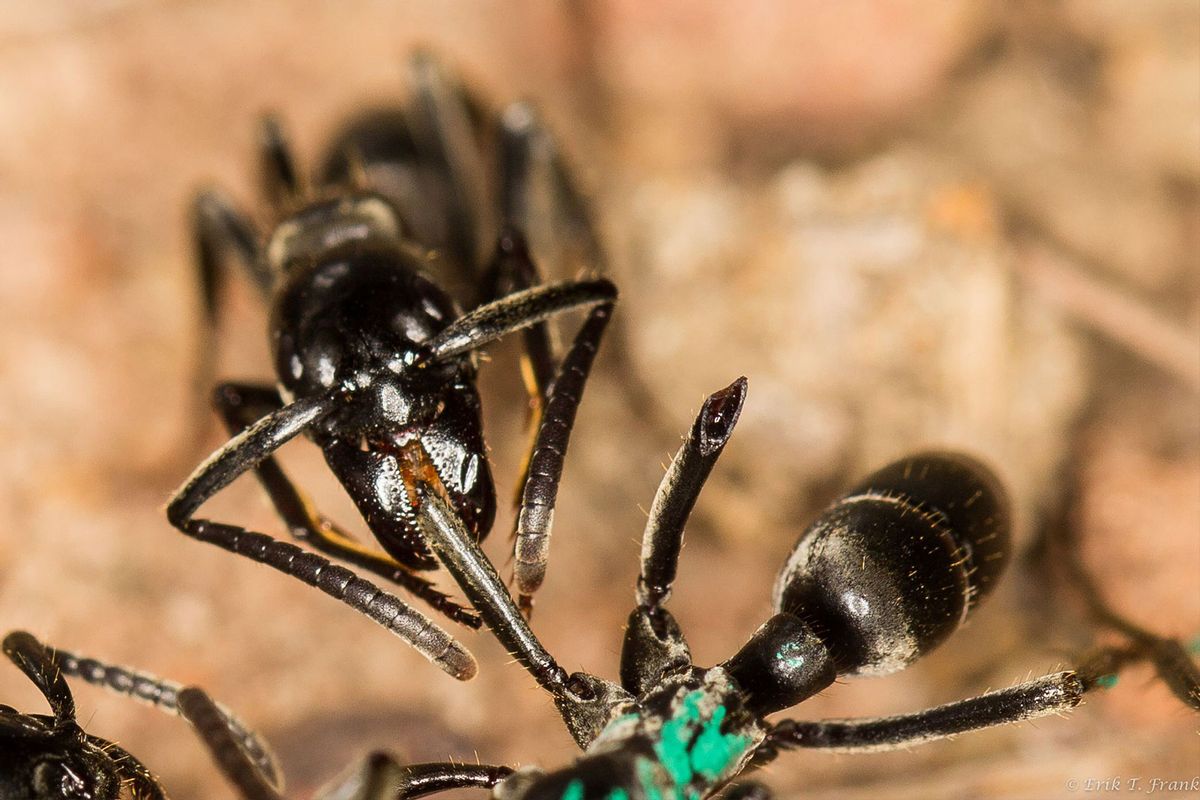Just like their mammalian counterparts, many insect species are quite social. Among these social insect colonies, a rather brave sub-Saharan species of termite-eating ant has offered researchers a look at how these animals care for each others' injuries. A new study in the journal Nature Communications found that Matabele ants (Megaponera analis), which sustain frequent battle wounds hunting their fearsome termite prey, are able to tell when their nestmates' wounds are infected and actually produce a number of antimicrobial compounds to heal them. This reduced mortality of their infected comrades by a whopping 90%.
"Injured workers are carried back to the nest where other workers treat their wounds, by licking and grooming the wound during the first three hours after injury. When the wounds of injured workers are not treated by nestmates, 90% of the injured workers die within 24 hours after injury, but the mechanisms behind these treatments are unknown," the study authors write. "Remarkably, the primary pathogen in ant’s wounds, Pseudomonas aeruginosa, is also a leading cause of infection in combat wounds, where infections can account for 45% of casualties in humans. In M. analis [ants] the targeted treatment with antimicrobial compounds was extremely effective in preventing lethal bacterial infections by P. aeruginosa. This could potentially lead to promising new medical compounds to cure infections in human societies."
The researchers found that wound care behavior among the colonies included more than just cleaning and grooming behavior by a nursing ant toward an infected individual. The nursing ant also produces a particular secretion in its metapleural gland that contains antimicrobial compounds, which the nursing ant then applies to its wounded fellow — similar to how some mammals lick wounds to apply antiseptic saliva. The nursing ants were also remarkably keen at distinguishing between the infected and sterile ants added by researchers, opting to spend more time and spit-salve on their critical-care nestmates as opposed to those dropped in with clean wounds.



Shares